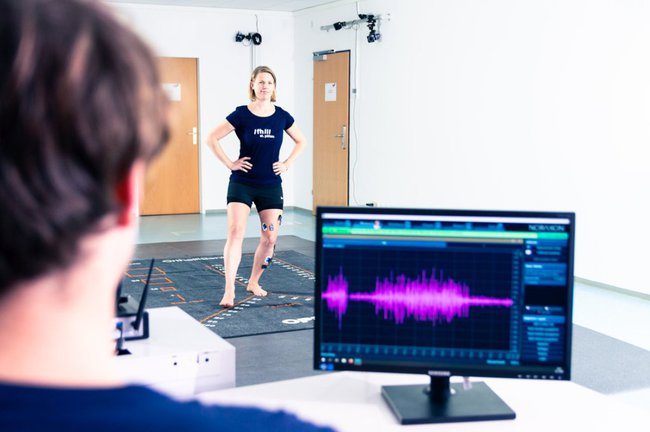One of the World’s Largest Gait Databases
Publicly Accessible Database Offers Comparison Data for Diagnosis and Treatment

The recently launched Gutenberg Gait Database is the world’s largest collection of gait analyses of healthy test subjects and offers comparison data for the diagnosis and treatment of gait disorders. The database was created by Johannes Gutenberg University Mainz and the St. Pölten University of Applied Sciences.
Better Data for Better Treatment
Gait impairments and movement disorders frequently occur across all age groups. They are an enormous socio-economic burden and put a great strain on the patients’ lives. In many cases, however, such gait impairments are only a side effect or the symptom of an underlying illness. Therefore, biomechanical gait analyses represent an additional helpful tool for diagnosis and subsequent treatment.
Gait impairments or underlying illnesses may only be reliably identified and classified if there is a sufficient volume of data from healthy persons. “In the past, however, there was a worldwide lack of comparison data from healthy persons”, says Fabian Horst of Johannes Gutenberg University Mainz (JGU). Together with his colleagues and the St. Pölten UAS’ researcher Djordje Slijepčević, the sports scientist created a database to close this gap. It is the world’s largest database of healthy test subjects that is publicly accessible.
Data of 350 Healthy Persons Aged 11 to 64
Horst and Slijepčević collected data from 350 healthy persons who visited JGU’s biomedical laboratory within the past seven years. The database contains details on ground reaction force and the force application point of two consecutive steps.
Such measurements are performed while the feet touch the ground using force plates integrated into the ground. The ground reaction force describes the force that is created during ground contact between the foot and the ground. It is a standard parameter in biomechanical gait analysis.
A Database Open to All Interested Users
The world’s largest database filled with data from healthy persons is open to all interested users who may use it for their individual purposes. “Orthopaedic institutions, for example, may download the data to create standard values for clinical practice, and research institutions can gain new insights into the human gait based on these data”, says Slijepčević to describe the possibilities for application. Database users have both raw data and processed, ready-made data at their disposal.
“These datasets offer new possibilities for future studies on human gait. For example, they could be used as reference data for the analysis of pathological gait patterns or for the automatic classification through machine learning”, the authors write in an article for the journal Scientific Data. In future, the researchers plan to continuously expand the database, for example with regard to age and other factors.
Combination with Further Data
In 2020, the St. Pölten UAS and the Allgemeine Unfallversicherungsanstalt (AUVA) already published the world’s largest dataset with patient data in the area of clinical gait analysis: the so-called GaitRec Database, which also contains data on ground reaction force. “The combination of both data sources allows for the development of more complex and robust algorithms for the automatic analysis of gait patterns”, explains Slijepčević.
Further Education Programme on Gait Analysis
The St. Pölten UAS offers the further education programme “GAIT – Gait Analysis and Rehabilitation”. This further education programme equips health professionals and occupational groups who are directly involved in gait rehabilitation with detailed expert knowledge in this area.
Publication on the Gutenberg Gait Database
Fabian Horst, Djordje Slijepcevic, Marvin Simak & Wolfgang I. Schöllhorn Gutenberg Gait Database, a ground reaction force database of level overground walking in healthy individuals, Scientific Data 8: 232, 2 September 2021
Publication on the GaitRec Database
Horsak, B., Slijepcevic, D., Raberger, A. M., Schwab, C., Worisch, M., & Zeppelzauer, M. (2020). GaitRec, a large-scale ground reaction force dataset of healthy and impaired gait. Scientific data, 7(1), 1-8.
Further Information

Dipl.-Ing. Dr. Djordje Slijepčević , BSc
Deputy Head ofMedia Computing Research Group
Institute of Creative\Media/Technologies Department of Media and Digital Technologies
